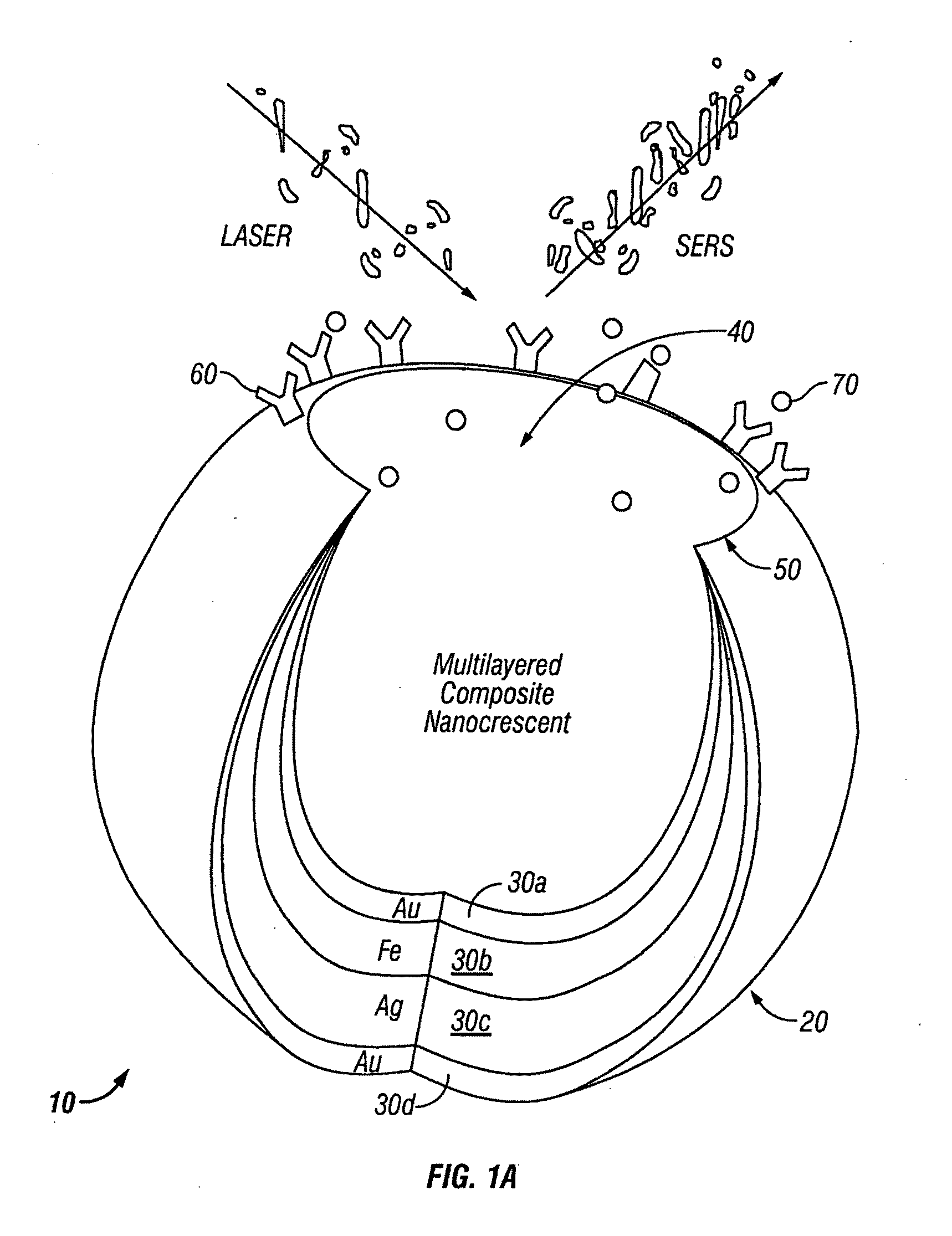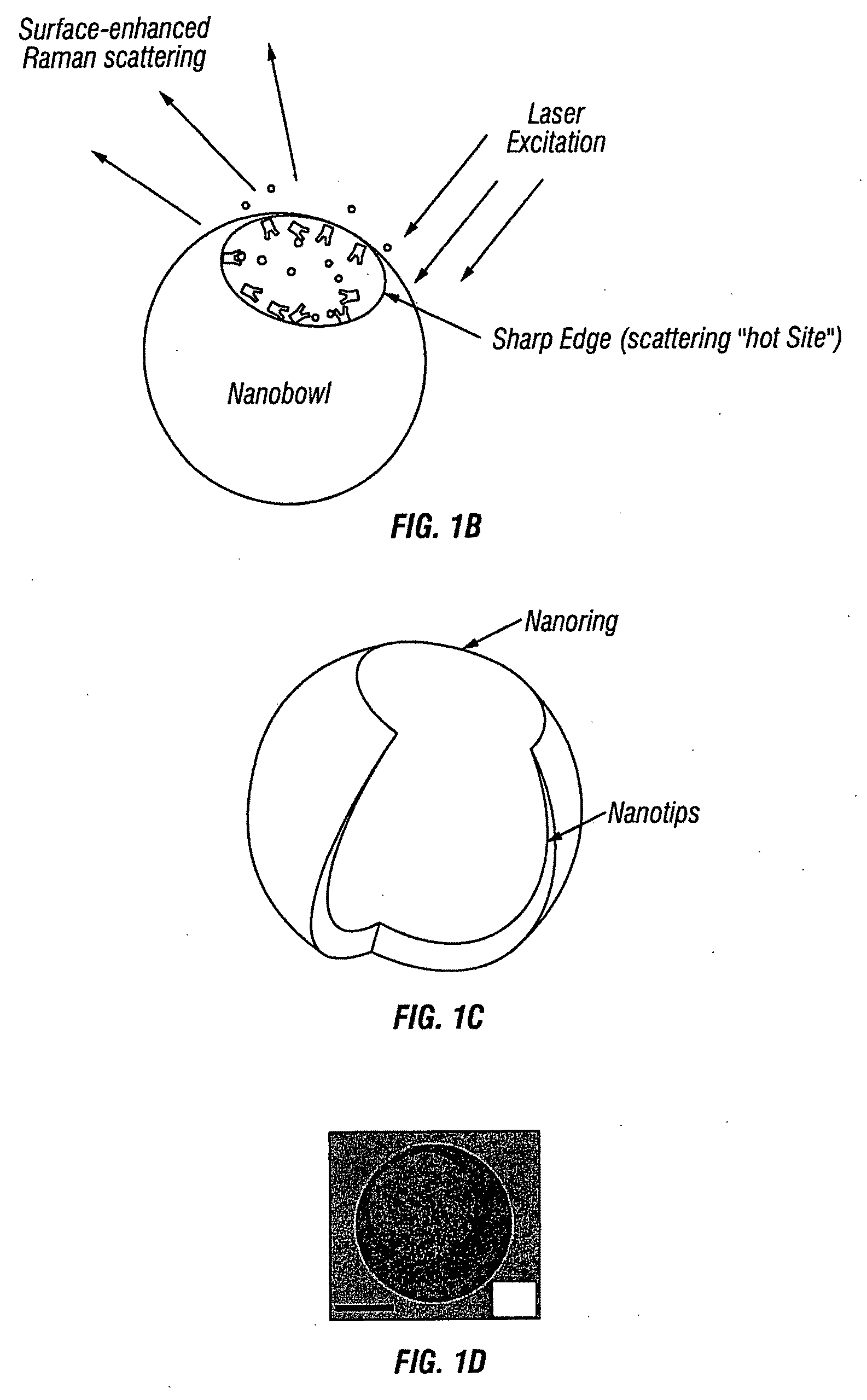Metallic Nanostructures Adapted for Electromagnetic Field Enhancement
a nano-structure and electromagnetic field technology, applied in the field of nanostructures, can solve the problems of difficult control of particle distance and difficult to fabricate consistently
- Summary
- Abstract
- Description
- Claims
- Application Information
AI Technical Summary
Benefits of technology
Problems solved by technology
Method used
Image
Examples
example 1
[0107]Fabrication of Nanocrescent SERS probes. The gold nanocrescent SERS probes are fabricated by rotational deposition of a thin gold layer on polymer nanospheres at certain angles and subsequent dissolution of the sacrificial nanosphere templates. The inner diameter and thickness of nanocrescent SERS probes can be controlled in the fabrication by choosing the size of sacrificial nanosphere templates as well as the gold deposition thickness and angle.
[0108]FIG. 2 shows the fabrication procedure, which depict a simple batch nanofabrication method. Glass slides were thoroughly rinsed with deionized water (Millipore, >18 MΩ) and dried under a stream of nitrogen gas. A thin layer of photoresist (Shipley S1818, Shipley, Mass.) was spin-coated on the cleaned glass substrates. Aqueous solutions of polystyrene colloids (300 nm; Duke Scientific, CA) were diluted in water to a volume fraction of 0.1%. A monolayer of sacrificial nanospheres was generated by drop-casting the dilute solution o...
example 2
[0129]In addition, the invention examines the ability of the nanostructures of the invention and related structures to include micro- and nano-fluidic movement. In an experiment to support this mechanism, a 2 μl water drop is dispensed on a hydrophobic glass slide, and a focused 785 nm laser beam with tunable power is used as the illumination source. The contact angle of the water drop on the glass slide was approximately 60° (other angles can be utilized). Approximately 1 nM PNPs were present in the liquid. When a 20 mW, 785 nm focused light spot was illuminated on the liquid contact line and translated outwards, the liquid evaporation, droplet formation and contact-line advance are clearly visible (FIG. 9b). The optically controlled advance of the liquid-air interface follows the light translation and stops on the removal of the illumination. However, as the liquid is unconfined in this case, the liquid flow cannot be guided unidirectionally and thus the flow speed is low.
[0130]In...
PUM
 Login to View More
Login to View More Abstract
Description
Claims
Application Information
 Login to View More
Login to View More - R&D
- Intellectual Property
- Life Sciences
- Materials
- Tech Scout
- Unparalleled Data Quality
- Higher Quality Content
- 60% Fewer Hallucinations
Browse by: Latest US Patents, China's latest patents, Technical Efficacy Thesaurus, Application Domain, Technology Topic, Popular Technical Reports.
© 2025 PatSnap. All rights reserved.Legal|Privacy policy|Modern Slavery Act Transparency Statement|Sitemap|About US| Contact US: help@patsnap.com



